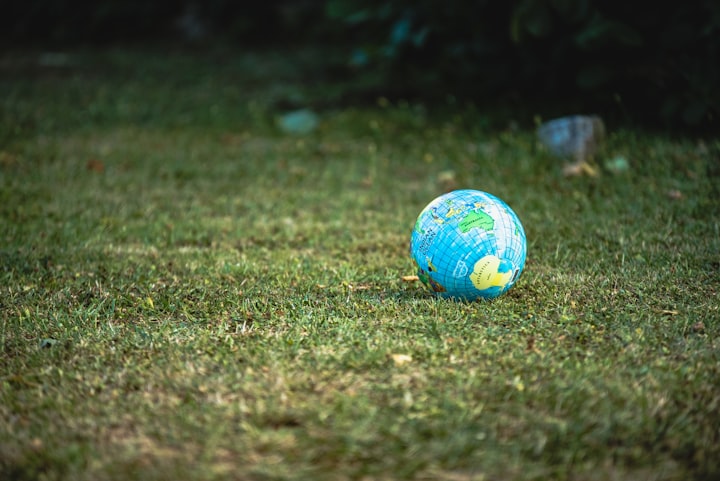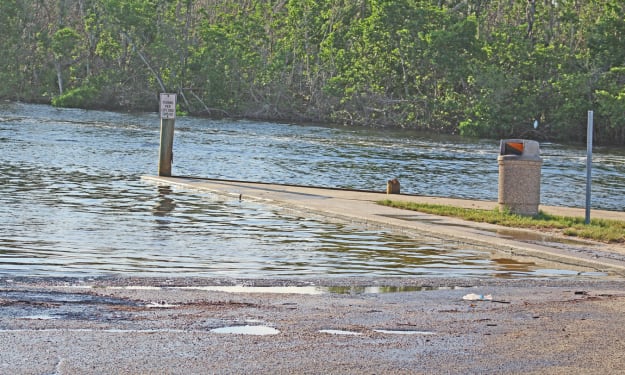The Beauty of Mother Nature
Capturing Earth's Wonders Through Photography
Nature is a source of inspiration and awe for many people. It offers a variety of landscapes, colors, shapes and textures that can stimulate our senses and emotions. Photography is a powerful medium to capture and share the beauty of nature with others. It can also help us appreciate and respect the natural environment and its inhabitants.
In this article, we will explore some tips and techniques to improve your nature photography skills and create stunning images that showcase the wonders of our planet. We will cover topics such as:
- Choosing the right equipment and settings for different scenarios
- Finding the best time and location to shoot
- Composing your shots with balance, harmony and perspective
- Using light, color and contrast to enhance your images
- Editing and post-processing your photos to bring out their full potential
Choosing the right equipment and settings for different scenarios
One of the first steps to take before you go out to photograph nature is to choose the right equipment and settings for your intended subject and style. Depending on what you want to capture, you may need different types of lenses, filters, tripods, flash units and other accessories.
For example, if you want to photograph wildlife, you may need a telephoto lens that allows you to zoom in and get close-ups of animals without disturbing them. You may also need a fast shutter speed to freeze their movement and a high ISO to compensate for low light conditions. On the other hand, if you want to photograph landscapes, you may need a wide-angle lens that captures a large field of view and creates a sense of depth. You may also need a small aperture to increase the depth of field and a low ISO to reduce noise.
Some general tips for choosing the right equipment and settings are:
- Use a DSLR or mirrorless camera that gives you more control over the exposure, focus and white balance than a point-and-shoot or smartphone camera.
- Use a tripod or a monopod to stabilize your camera and avoid blurry shots due to camera shake or wind.
- Use a polarizing filter to reduce glare and reflections from water, glass or metal surfaces and to enhance the colors and contrast of the sky, clouds and foliage.
- Use a neutral density filter to reduce the amount of light entering the lens and allow you to use slower shutter speeds or wider apertures without overexposing your shots. This can create interesting effects such as motion blur or shallow depth of field.
- Use a remote shutter release or a self-timer to avoid touching the camera when taking the shot and causing vibrations.
Finding the best time and location to shoot
Another important factor that affects the quality of your nature photos is the time and location of your shoot. Different times of the day and different seasons of the year can offer different lighting conditions, colors, moods and opportunities for capturing nature's beauty.
Some general tips for finding the best time and location are:
- Plan ahead and do some research on your destination. Look for maps, guides, reviews or online forums that can give you information on the best spots, angles, directions and times to shoot.
- Check the weather forecast and the sunrise and sunset times for your location. Avoid shooting in harsh midday sun that can create harsh shadows, washed-out colors and overexposed highlights. Aim for shooting in golden hour (the hour after sunrise or before sunset) or blue hour (the hour before sunrise or after sunset) when the sun is low on the horizon and casts a warm or cool glow on the scene.
- Be flexible and adaptable. Sometimes you may encounter unexpected situations such as clouds, fog, rain or snow that can change the atmosphere and appearance of your scene. Instead of giving up or waiting for better conditions, try to make use of what you have and look for creative ways to capture nature's diversity.
Composing your shots with balance, harmony and perspective
One of the most challenging aspects of nature photography is composing your shots in a way that conveys your vision and message effectively. Composition is the arrangement of elements in your frame that guides the viewer's eye and attention. A good composition should have balance, harmony and perspective.
Some general tips for composing your shots are:
- Use the rule of thirds to divide your frame into nine equal parts by two horizontal and two vertical lines. Place your main subject or point of interest along one of these lines or at one of their intersections. This creates more visual interest than placing it in the center.
- Use leading lines to draw the viewer's eye into your image. Leading lines are natural or artificial lines that create a sense of direction or movement in your image. They can be roads, rivers, fences, bridges, trails or anything else that creates a linear pattern.
- Use framing to isolate your subject and emphasize its importance. Framing is the use of natural or artificial elements that surround your subject and create a border or a window around it. They can be trees, branches, rocks, arches, windows or anything else that creates a shape or a contrast.
- Use symmetry to create a sense of balance and harmony in your image. Symmetry is the repetition or mirroring of elements on both sides of your frame. They can be reflections, shadows, patterns or anything else that creates a similar or identical appearance.
- Use perspective to create a sense of depth and scale in your image. Perspective is the illusion of three-dimensional space created by the relative size, position and distance of objects in your frame. You can use foreground, middle ground and background elements to create layers and dimension in your image. You can also use a wide-angle lens to exaggerate the perspective and make objects appear closer or farther than they are.
Using light, color and contrast to enhance your images
One of the most crucial elements of nature photography is light. Light can make or break your image. It can create different effects such as mood, drama, emotion and atmosphere depending on its direction, intensity, color and quality.
Some general tips for using light, color and contrast are:
- Use natural light as much as possible. Natural light is the light that comes from the sun or the moon and reflects off the atmosphere and the environment. It can vary in color temperature from warm (yellow-orange) to cool (blue) depending on the time of day, the season and the weather. It can also vary in quality from hard (direct) to soft (diffused) depending on the angle, the cloud cover and the surface it hits.
- Use artificial light sparingly and creatively. Artificial light is the light that comes from man-made sources such as flash units, lamps, candles or fire. It can be useful to fill in shadows, add highlights, create effects or illuminate dark areas. However, it can also create unnatural colors, glare, reflections or noise if not used properly.
- Use color to convey mood, emotion and meaning in your image. Color is the hue or tone of an object or a scene that is influenced by the light source and the camera settings. It can evoke different feelings and associations depending on its type, intensity and combination. For example, warm colors such as red, orange and yellow can suggest warmth, energy and excitement while cool colors such as blue, green and purple can suggest calmness, freshness and mystery.
- Use contrast to create drama, tension and interest in your image. Contrast is the difference between light and dark areas in your image that creates a sense of depth, dimension and texture. It can also highlight or emphasize certain elements or details in your image. You can increase or decrease the contrast by adjusting the exposure, the white balance or the post-processing settings.
Editing and post-processing your photos to bring out their full potential
The final step to improve your nature photography skills is editing and post-processing your photos. Editing is the process of selecting, organizing and deleting your photos based on their quality, relevance and impact. Post-processing is the process of enhancing, correcting or altering your photos using software tools such as Photoshop, Lightroom or Snapseed.
Some general tips for editing and post-processing are:
- Shoot in RAW format if possible. RAW format is a file format that captures all the data from your camera sensor without any compression or loss of quality. It gives you more flexibility and control over your photos than JPEG format which applies some processing and compression by default.
- Use a calibrated monitor to view and edit your photos. A calibrated monitor is a monitor that has been adjusted to display accurate colors, brightness and contrast according to a standard or a profile. It ensures that your photos look consistent and realistic across different devices and platforms.
- Use non-destructive editing techniques as much as possible. Non-destructive editing techniques are techniques that do not alter or overwrite the original data of your photos but instead create layers or copies that can be modified or removed later. They allow you to experiment with different effects without losing any quality or information.
- Use basic adjustments to correct exposure, white balance, contrast, saturation, sharpness and noise in your photos. These are some of the most common and essential adjustments that can improve the overall appearance and quality of your photos.
- Use advanced adjustments to enhance specific aspects or areas of your photos such as curves, levels, selective color, dodge and burn, clone stamp, healing brush etc. These are some of the more complex and powerful adjustments that can create dramatic changes or subtle improvements in your photos.
- Use filters, presets or plugins to apply predefined effects or styles to your photos such as black and white, sepia, vintage etc. These are some of the easiest and fastest ways to transform your photos with minimal effort.
Conclusion
Nature photography is a rewarding and enjoyable hobby that can enrich your life with beauty, wonder and creativity. By following these tips and techniques you can improve your skills and create stunning images that capture nature's essence.
About the Creator
Ameer Muavia
I turn words into magic: As a content writer, I have a way with words that brings your brand to life. Let's make some magic together.







Comments
There are no comments for this story
Be the first to respond and start the conversation.